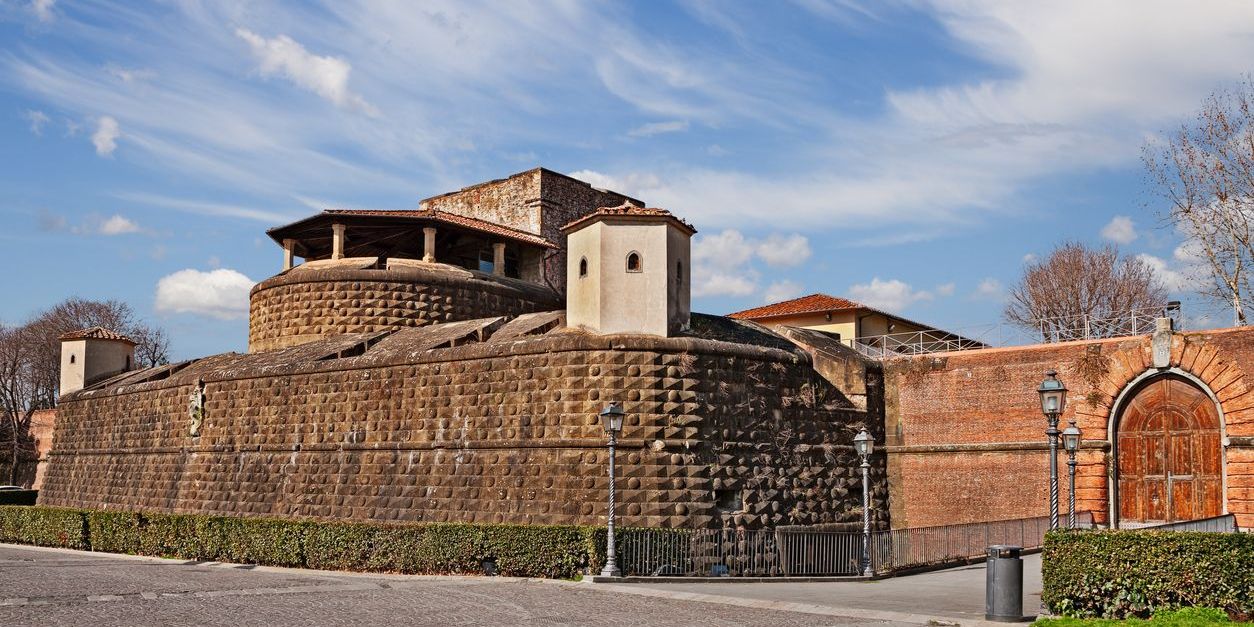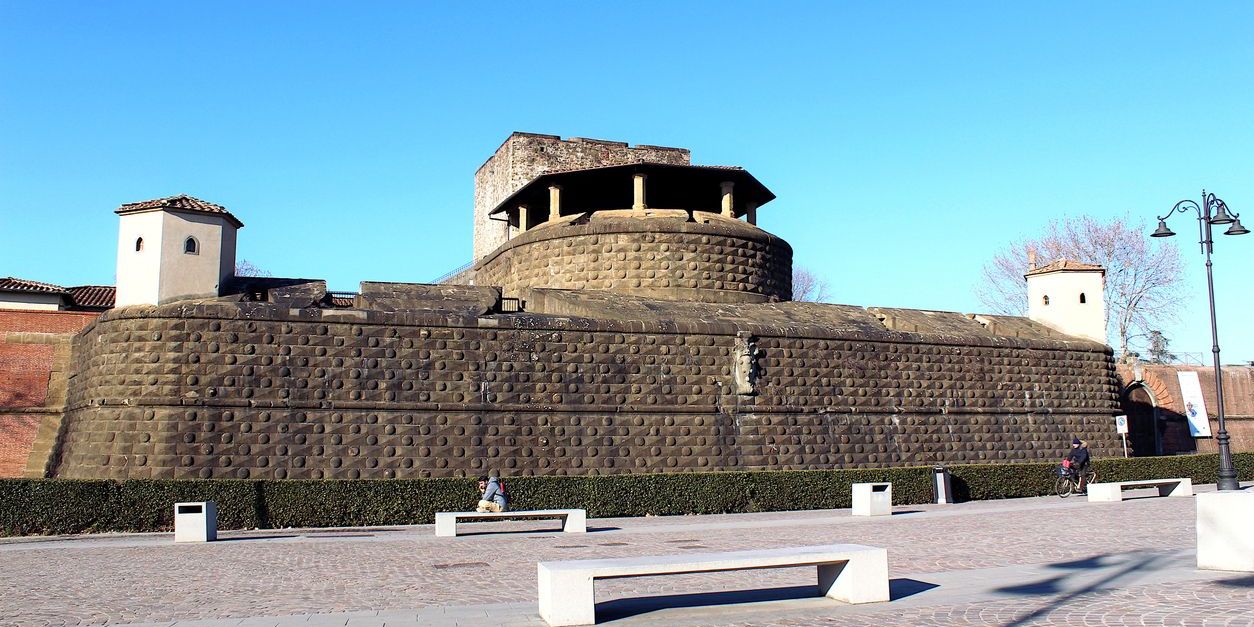Florence is a city that needs no introduction, yet it still holds secrets beyond the well-trodden paths to the Uffizi and the Duomo. Tucked away just a short walk from the main railway station, Santa Maria Novella, lies a monument of imposing power and quiet history: the Fortezza da Basso. This colossal fortress, often overlooked by first-time visitors in their rush to see the Renaissance greats, is a cornerstone of Florentine identity. It’s a place where the city’s Medici-era political strife and its modern-day role as a cultural hub dramatically converge. To understand Florence fully, one must look beyond the galleries and into the shadow of its formidable walls.
History of the fortress da Basso
The story of the Fortezza da Basso is inextricably linked to the Medici family and their iron grip on power. Its official name, the Fortress of Saint John the Baptist, belies its true, more pragmatic purpose. Following the traumatic Sack of Rome in 1527 and the subsequent overthrow of Medici rule, a republican government took control of Florence. This was short-lived. In 1530, after a long siege, the Medici were restored to power. Alessandro de’ Medici, the newly installed Duke, immediately set about ensuring such an uprising could never happen again.
His solution was this fortress. Commissioned in 1534 and designed by the renowned architects Antonio da Sangallo the Younger and Pier Francesco da Viterbo, its construction was swift and ruthless. To make space, entire neighbourhoods, churches, and monasteries were demolished. The message was clear: Medici authority was now absolute, and this physical symbol of their power would loom over the citizens, a constant reminder of their subjugation.
It was one of the most formidable military constructions of its time, designed to withstand internal rebellion rather than external invasion. For centuries, it served as a barracks and military prison, its stern facade a silent witness to the shifting tides of Florentine history.

Architecture and layout of the compound
Approaching the Fortezza da Basso, the first thing that strikes you is the sheer scale of its walls. The architecture is a masterclass in 16th-century military engineering. The outer walls form a unique pentagonal shape, a design that allowed for better defence and lines of fire. They are constructed from rugged, unadorned pietra forte, the same hardy sandstone that gives many of Florence’s historic buildings their distinctive golden-brown hue. This deliberate lack of decorative elegance sets it apart from the city’s more graceful structures, reinforcing its purely functional, intimidating origin.
The layout is a fascinating study in defensive layers. The entire compound is surrounded by a wide, dry moat, a formidable obstacle for any would-be attacker. The most iconic element is the central keep, known as the Cassero. This is the fortress’s strongest point, a massive, towering structure where the garrison would have made its last stand.
Over the years, the interior has been significantly modernised to serve its current role as a premier exhibition centre. However, walking the perimeter, you can still trace the original ramparts and feel the immense defensive power of the place. It’s a stark contrast to the artistic beauty Florence is famous for, offering a raw and compelling look at the city’s pragmatic side.
Events and trade fairs at the Fortezza da Basso
Today, the Fortezza da Basso has been entirely repurposed from an instrument of control to a beacon of commerce and culture. It is one of the city’s most important conference and exhibition centres, breathing contemporary life into its ancient stones. The cavernous halls and modern pavilions within the historic walls play host to a dynamic calendar of events that draw international crowds.
The most famous of these is undoubtedly Pitti Immagine, a series of world-leading fashion fairs that transform the fortress into the global epicentre of men’s and women’s style twice a year.
Beyond high fashion, the venue accommodates everything from major trade fairs like the artisanal MIDA to public events.
It is worth noting that the event landscape in Florence is always evolving. For instance, the Florence Marathon expo, once a fixture here, has now moved to the Stazione Leopolda. This constant rotation and evolution of events mean the fortress’s schedule is always vibrant. It’s a living, working part of the city’s economy.
For visitors, checking the event schedule before you go is essential; you might find everything from a vintage car show to a gourmet food festival taking place behind the historic walls, offering a unique and modern Florentine experience.

How to visit the fortress
Visiting the Fortezza da Basso is straightforward, but requires a bit of planning compared to a standard museum. As a functioning exhibition centre, public access to the interior is primarily dependent on whether an event is being held. If there is a public trade fair or show, you can gain entry by purchasing a ticket for that specific event. These tickets are typically available online via the Firenze Fiera website or at the on-site box office during the event.
If your visit coincides with a period when no events are scheduled, the interior halls will likely be closed. However, this is not a reason to skip it. The extensive external grounds, the massive walls, and the dry moat are freely accessible to the public. You can walk the entire perimeter, appreciating the scale and architecture without spending a penny. It’s a fantastic activity to combine with a visit to other nearby attractions.
The tram T1.3 and T2 stop “Fortezza” is directly in front of the entrance; numerous buses including the 12, 7 and 20 also terminate here. Drivers pay €2 per hour in the underground car park, but spaces disappear fast during fairs. As such, you’ll want to arrive before 09:00 or use the Santa Maria Novella park-and-ride and walk ten minutes.
Come and discover the Fortezza da Basso
The Fortezza da Basso stands as a powerful testament to a different side of Florence—one of raw power, political intrigue, and resilient adaptation. It is an essential piece of the city’s narrative, offering a compelling contrast to its more famous artistic treasures. From its origins as a Medici stronghold to its current life as a pulsating hub of international events, the fortress demands attention.
Exploring this landmark thoroughly, along with the city’s countless other wonders, requires a base of equal distinction. After a day of deciphering Renaissance masterpieces and formidable fortresses, retreat to the comfort and elegance of a private residence curated by Dimora Italia. We specialise in sourcing the finest luxury villas and exclusive city apartments across Florence and Venice, ensuring your stay is as memorable as the destinations you explore. Discover more travel inspirations and insights on our blog, and let us help you secure the perfect accommodation from which to uncover the many layers of Florence.






